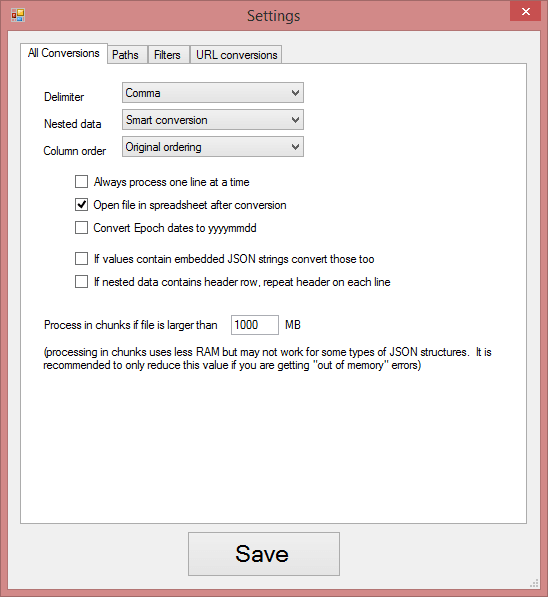
The reason why we came up with CSVJSON was not to allow embedding of JSON objects in a CSV line, that's a nice benefit but our main reason was to have the very well defined encoding semantics of JSON (as per ) be used to describe CSV lines (just taking out the ). To convert JSON back to CSVJSON format, use the companion tool JSON to CSV and toogle the Output CSVJSON variant switch.

On the other hand, CSV stands for comma-separated values. Nested documents will have a ‘.’ appended between the keys. Column headings will be automatically generated based on the keys of the JSON documents. JSON is a data-interchange format with human-readable text that uses formatting rules to serialize complex data structures and value types for use in programming languages. json-2-csv Convert JSON to CSV or CSV to JSON This node module will convert an array of JSON documents to a CSV string. Given CSVJSON's simplicity and utility more tools and libraries will support it over time. JSON and CSV are two different data formats. As a result, there are many cases where products and libraries that can read CSV would fail to read CSVJSON due, for example, to escaping rules and embedded objects. Step 4: Click on the Download button to download the CSV data as a file. Step 3: Select converted CSV data separated as tab, comma or semicolon. Step 2: Click on the JSON to CSV button to convert JSON to CSV online.

Being based on JSON, there is large variety of high quality formatters and parsers in virtually every programming language.ĬSVJSON is more expressive than CSV (whose common use is documented by RFC-4180. Step 1: Copy and paste the JSON code or upload your JSON file.It can deal with modern database features like objects and arrays.

Being based on UTF-8 it can reliably maintain text from different languages.This method helps if you're creating a large number of tasks. An explanation of CSVJSON and its benefits can be found at the specification website: ĬSVJSON is ideal as a common format for dumping database tables because: The SharePoint Migration tool (SPMT) lets you bulk upload your migration task information by using either a JSON or CSV file.Wrap a line with square brackets and use JSON.parse() to convert to a JSON array. Parsing CSVJSON is done by processing one line at a time.For data made of numbers and 'simple' strings, CSVJSON looks just like CSV.CSVJSON is a CSV-like text format where each line is a JSON array without the surrounding brackets.Also, I already ran npm install json-2-csv and checked my package.json to see if its there (version 3.5.4) let converter = require('json-2-csv') Here's the code that I tried with the test data.

But when I follow the docs and try and use it I get undefined as my result. I'm pretty new to nodeJS so maybe I'm doing something wrong but I'm trying to use the node module json-2-csv.


 0 kommentar(er)
0 kommentar(er)
